Sir Mungo William MacCallum KCMG 1854 - 1942
Sir Mungo MacCallum was a noted academic, university administrator and advocate of the benefits of the study of literature. Born and educated in Scotland, he was appointed foundation Professor of Modern Language and Literature at the University of Sydney in 1886. During a long tenure, he developed the teaching of English, French and German at the university and was widely known as a Shakespearean scholar, eventually retiring in December 1936 after serving as Vice-Chancellor, Deputy Chancellor, and Chancellor (1934 to 1936) of the University. He was remembered for his ‘great gifts of scholarship, eloquence, and counsel’1
'Mac' Sir Mungo MacCallum caricature - University of Sydney Archives 000027
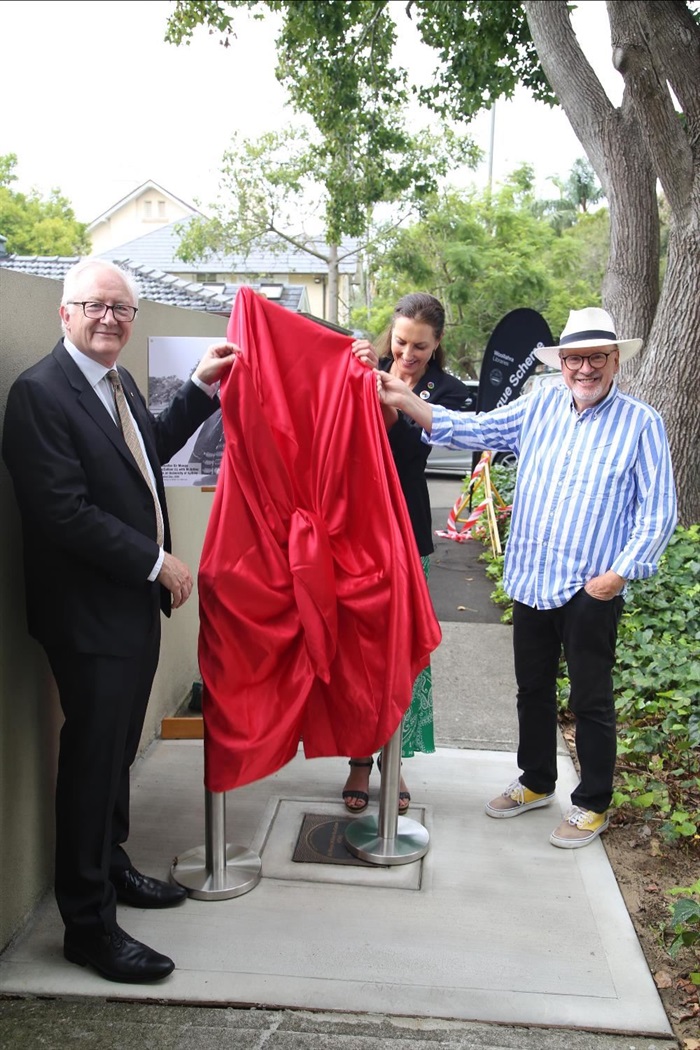
Plaque unveiling for Sir Mungo William MacCallum KCMG at 11 Wyuna Road, Point Piper on 28 February 2023. L-R Prof. Stephen Garton AM (Guest Speaker), Mayor Cr Susan Wynne and Graham Humphrey (nominator).
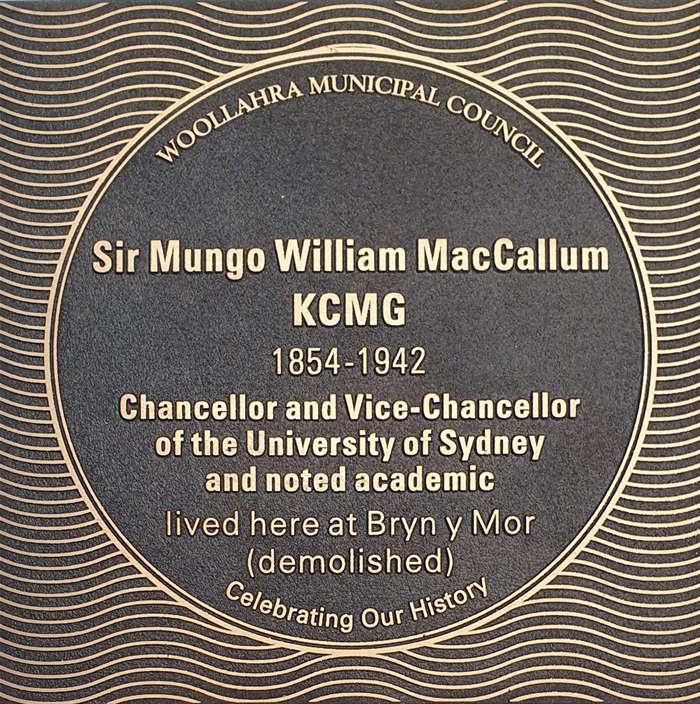
On 28th February, 2023, a plaque to commemorate the life and work of Sir Mungo William MacCallum was unveiled at 11 Wyuna Road, Point Piper, the site of his former home 'Bryn y Mor'.
Gallery
Sir Mungo William MacCallum KCMG
26 February 1854 - 3 September 1942
Sir Mungo MacCallum was a noted academic and university administrator. In 1886 he was appointed foundation Professor of Modern Language and Literature at the University of Sydney and during his long tenure, developed the teaching of English, French and German at the university, later serving as Vice-Chancellor and Chancellor of the University. An advocate of the benefits of the study of literature, he also had considerable involvement in the delivery of extension lectures in English Literature to the wider community.
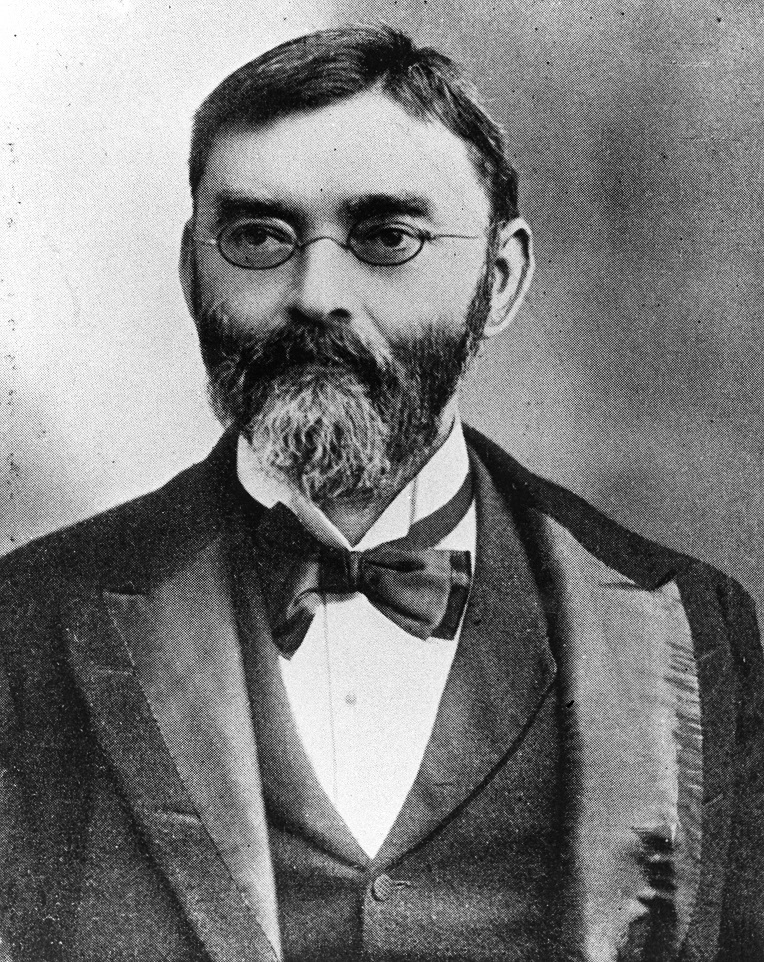
Mungo William MacCallum. University of Sydney Archives G3-224-0359.
Early Life and Education
Mungo William MacCallum was born in Glasgow, Lanarkshire, Scotland on 26 February 1854, son of Mungo MacCallum, a merchant, and Isabella (née Renton).
MacCallum was educated at Glasgow High School and the University of Glasgow, completing an MA in 1877. After graduating he studied in Germany at the Universities of Leipzig and Berlin and was awarded ‘one of the highest academic distinctions that Glasgow could offer – the Luke Fellowship awarded for literature, philosophy and classics’ – and taught there for two years.1 The results of his research was published in his first book in 1884 Studies in Low German and High German Literature.
Mungo MacCallum was appointed professor of English literature and history at the University College of Wales, Aberystwyth 1879. In late 1886 MacCallum was selected, from forty-five candidates, as the foundation Professor of Modern Language and Literature at the University of Sydney. With his wife Dorette and two children, MacCallum sailed for Australia, arriving in February 1887.
During his long tenure at Sydney University, MacCallum developed the teaching of English, French and German as scholarly subjects, taking direct responsibility for English, and by 1892 honours schools had been established. He encouraged scholars to enter academic work and to undertake postgraduate studies overseas. He published a number of works of literary criticism including a major work in 1894, Tennyson's Idylls of the King and Arthurian Story from the XVIth century.
MacCallum, along with his colleagues, was also extensively involved in extension lectures in English Literature, believing they had a responsibility to take the university to the wider community. MacCallum's literature courses were justly celebrated and he continued to lecture in his later years.
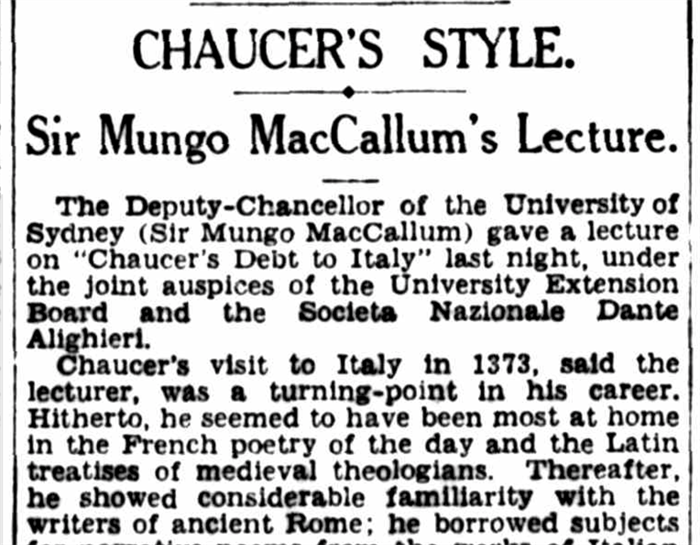
The Sydney Morning Herald, October 29, 19312
In 1897 he became president of the Sydney University Union, and in 1898, Dean of the Faculty of Arts3, an office that he held (with one interval) until 1919 and ex officio a fellow of the senate.
The centre-piece of undergraduate studies in English literature was Shakespeare. A. R. Chisholm, one of MacCallum's students, later wrote:
‘Mac’ was a little man with a big personality. He had a rather scrubby beard and moustache, spoke with a broad Scotch accent … and wrote a dreadful hand, which on the blackboard began in one corner and finished somewhere diagonally opposite. But his lectures were extraordinarily good, and when he talked about Shakespeare he kept his audience spellbound. Cable, K. J. 'MacCallum, Sir Mungo William (1854–1942).4
Having arrived in Sydney as a medieval scholar5, and an acknowledged expert on Chaucer and Malory, he found scarce resources in the University Library or elsewhere in those fields, but was given access to what was probably Australia’s best collection of Elizabethan literature, gathered by David Scott Mitchell'6. The result was the publication Shakespeare's Roman Plays and Their Background (1910, reprinted 1925, 1935, 1967) in which he analysed the sources of the three principal Roman plays and made an extensive analysis of their leading characters, and which assured his place as a Shakespearean scholar.
He was Chairman, Professorial Board in 1894, and a Fellow of Senate from 1898 to 1914 and from 1916 to 1936. Finally allowed to retire in 1920, MacCallum was appointed Professor Emeritus of Modern Literature and continued to lecture in English.
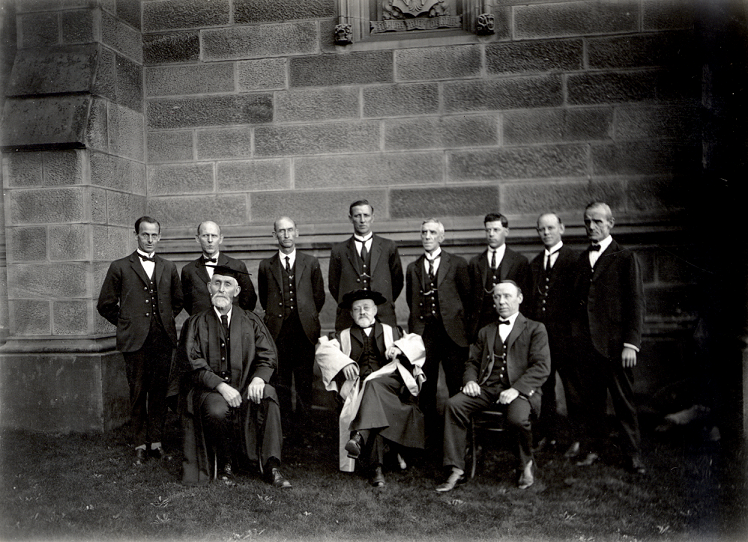
Sir Mungo MacCallum (centre front) and William Barbour with staff 1920. University of Sydney Archives G3_224_2449_2
In December 1924, at the age of 70, MacCallum was appointed to the new position of Vice-Chancellor of the University. He resigned the position in 1927, having seen a tenfold increase in the number of students, from 263 students in 1887, during his years of service8. In 1928 he was elected as Deputy Chancellor, and as Chancellor from 1934 until he retired from that position at the November 19369.
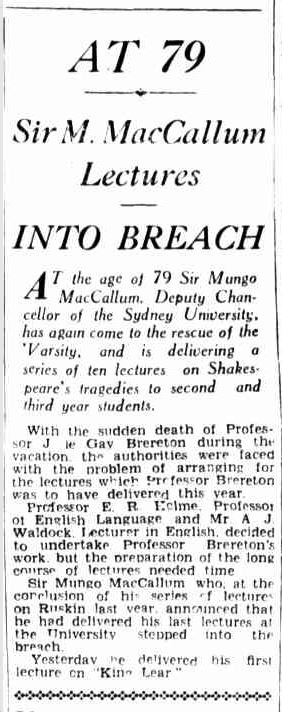
The Sun March 16, 1933 p 157
Although his own academic career was based in the humanities, MacCallum’s support for the university was broad, and in an address in 1936 he promoted the value of the agriculture and veterinary faculties, calling on the government to increase the grant to the University so that they could extend their work in the interest of primary industries, citing the high level of demand for graduates.10
Sir Mungo MacCallum’s influence in the rapidly-growing university of his time, and ‘great gifts of scholarship, eloquence, and counsel’ were remembered following his death in 1942.11
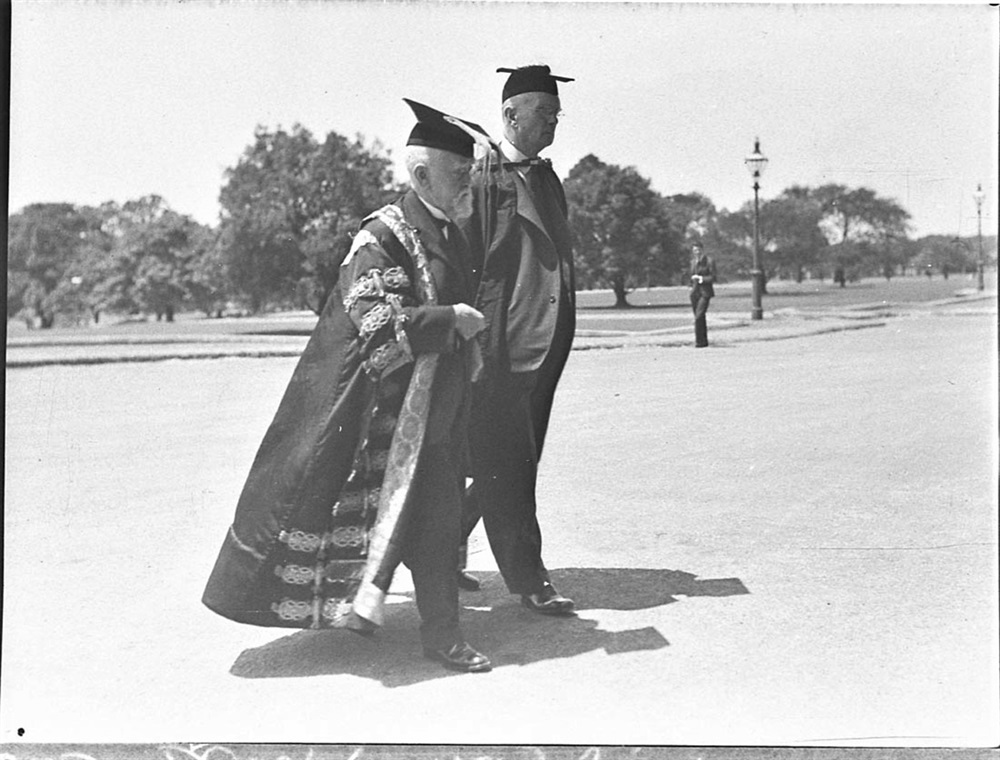
The Chancellor Sir Mungo MacCallum (on left) and Dr Arthur Mills, former Dean of the Faculty of Medicine, on their way to attend the Armistice Day service in the Great Hall on 11 November 1936. Hood Collection, Mitchell Pictures, State Library of NSW12
One of his notable series of lectures led directly to the foundation of the Shakespeare Society of New South Wales, of which MacCallum was first president. He was also a trustee from 1890 (Chairman of Trustees 1906-12) of the Public Library of New South Wales, a member of the advisory committee of the Commonwealth Literary Fund in 1917-29, president of Sydney Repertory Theatre Society and the Turret Theatre Dramatic Club, chairman of trustees of Sydney Grammar School in 1929-32, and a Foundation president of the Sydney branch of the English Association in 1923, which promoted English studies and Australian literature. In 1927 he chaired a Commonwealth committee appointed to report on the provision of university facilities for residents of Canberra.13
Awards
Mungo MacCallum was awarded an honorary LL.D. by the University of Glasgow in 1906 and an honorary D.Litt. by the University of Oxford in 1925 for his Shakespearian studies. 14
He was appointed Knight Commander of the Order of St Michael and St George (KCMG) (Imperial) in 1926 with the citation ‘Vice-Chancellor of the University of Sydney’ 15
In an extensive article, the Sydney Morning Herald paid tribute to Professor Sir Mungo MacCallum KCMG, saying
In the progress of literature in Australia Sir Mungo MacCallum has undoubtedly played a distinguished part’ and noting that ‘behind the scholar one always feels, in his company the bright presence of a likeable man. A cheerfulness of spirit, a quick sense of lively humour, with which he can illuminate, in the right places, the most profound of lectures, and a natural simplicity – these are the attributes which reveal in this brilliant scholarly man, an unpretending modesty and a quiet charm of personality which have won for him a big circle of friends outside the domain of literature as well as in it. 16
Mungo MacCallum met his wife Dorette in Aberystwyth in 1881, when she was teaching German and French there. Dorette Margarethe (Dorothea) (1863-1952), was born in 1863 at Elbstorf, Hanover, Prussia (Germany), one of eight children of Lorenz Peters, farmer and grazier. Dorette and Mungo married on 28 June 1882 at Elbstorf. 17
They had two children in Aberystwyth, the first Isabella Renton, named after MacCallum's grandmother, and the second, Mungo Lorenz, named after his two grandfathers. Their son Mungo Lorenz (1884-1933), a Rhodes scholar 1906, lawyer, scholar and journalist, and their daughter Isabella Lightoller (d1940) both predeceased him. Younger son Walter Paton (1895-1959), a physician, served with the Australian Imperial Force, and was awarded the Distinguished Service Order and Military Cross.
Lady MacCallum was a founder of the National Council of Women of New South Wales and president in 1919-28. She also worked for the Infants' Home, Ashfield, the Sydney Day Nursery and Nursery Schools' Association, the Australian Board of Missions, the New Settlers' League of Australia, the Royal Society for the Welfare of Mothers and Babies and the Sydney University Women's Society (Settlement).
Sir Mungo and Lady MacCallum built one of the first houses on the Woollahra Point Estate, when ‘Wyuna Road was a carriage drive, or really more of a cart track’, moving in around 1900 before the road was completed.
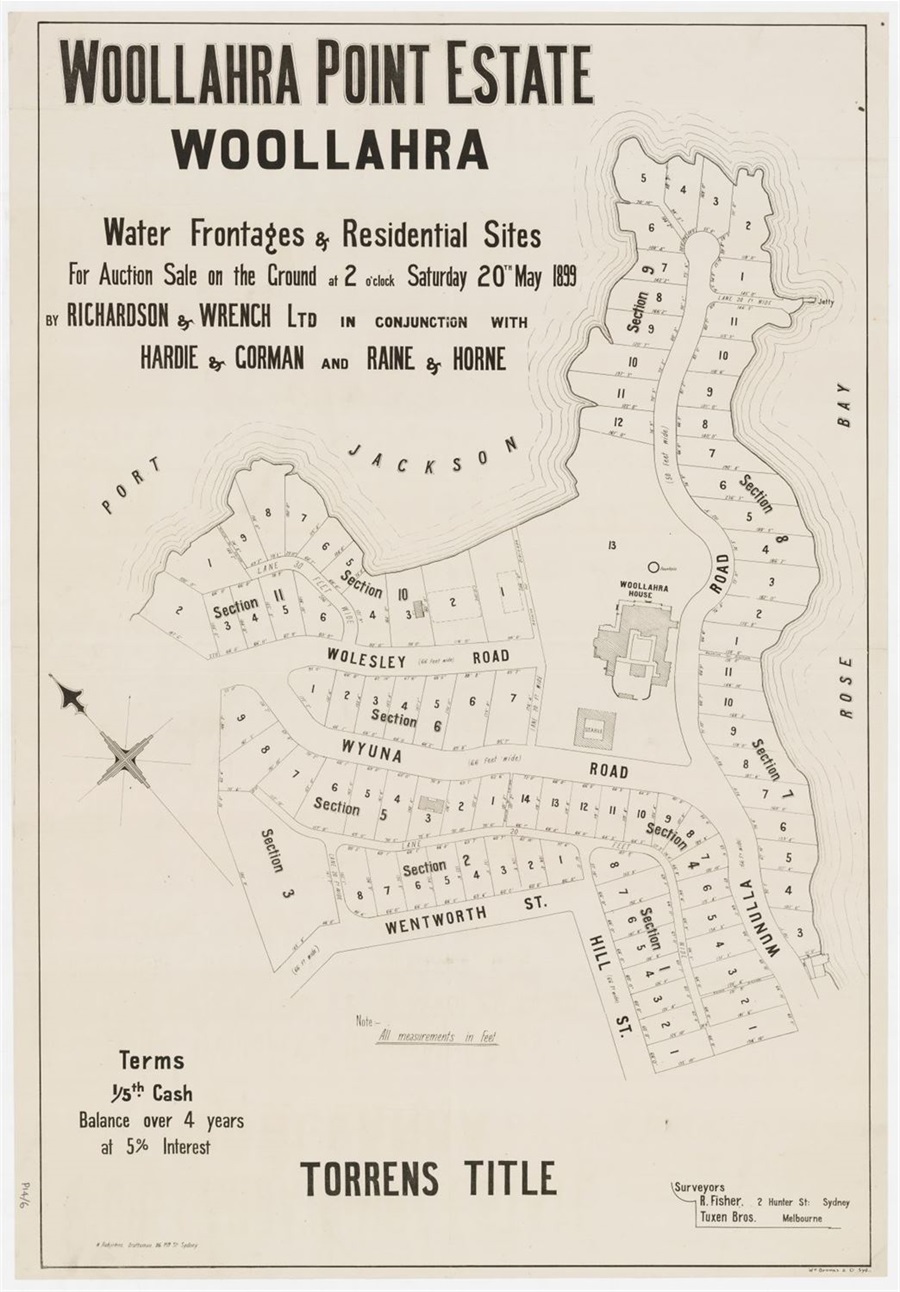
Woollahra Point Estate Subdivision 1889. State Library of NSW
The house was called Bryn y Mor, Welsh for ‘Hill by the Sea’, and was the MacCallum family residence from c1900-1928/9. The site - originally Lots 3 and 4 of Section 6 of the Woollahra Point subdivision, purchased in 1899 - was registered in the name of Mungo William MacCallum’s wife Dorette.
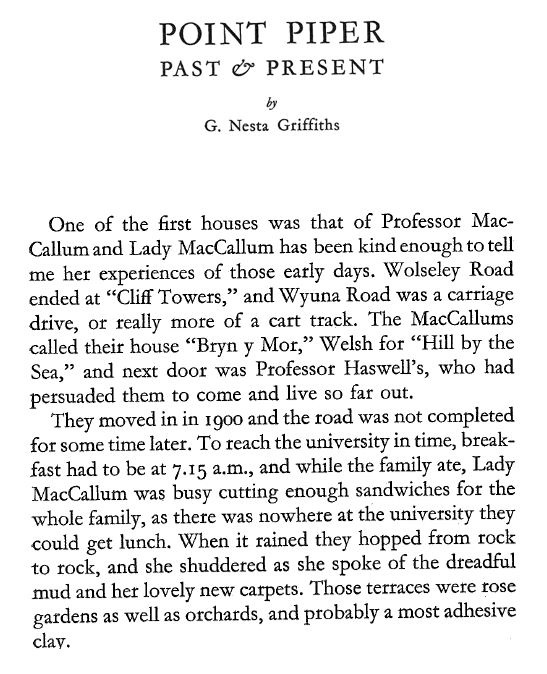
Point Piper, Past and Present first published by Ure Smith 1947. This extract from an edition published by Ure Smith 1970 p73
The property had frontages to Wolseley Road and Wyuna Road, but was later subdivided to form two lots one, with a frontage to Wyuna Road (now 11 and 11B Wyuna Road) and the other fronting Wolseley Road (now 95 Wolseley Road). 18
An 'Application for Building Permit' submitted to council in 1912 by Professor W. M. MacCallum, (Application no. 232), shows the outline plan of a ‘New House' on the Wolseley Road frontage, and an existing house, annotated with ‘Prof MacCallum’ on the Wynua Road frontage. Records show that the new house was the home of Mungo Lorenz MacCallum and his wife Hilda Kathleen Ballardie who were married in December 1912 - the house was named 'Hakgala'.19
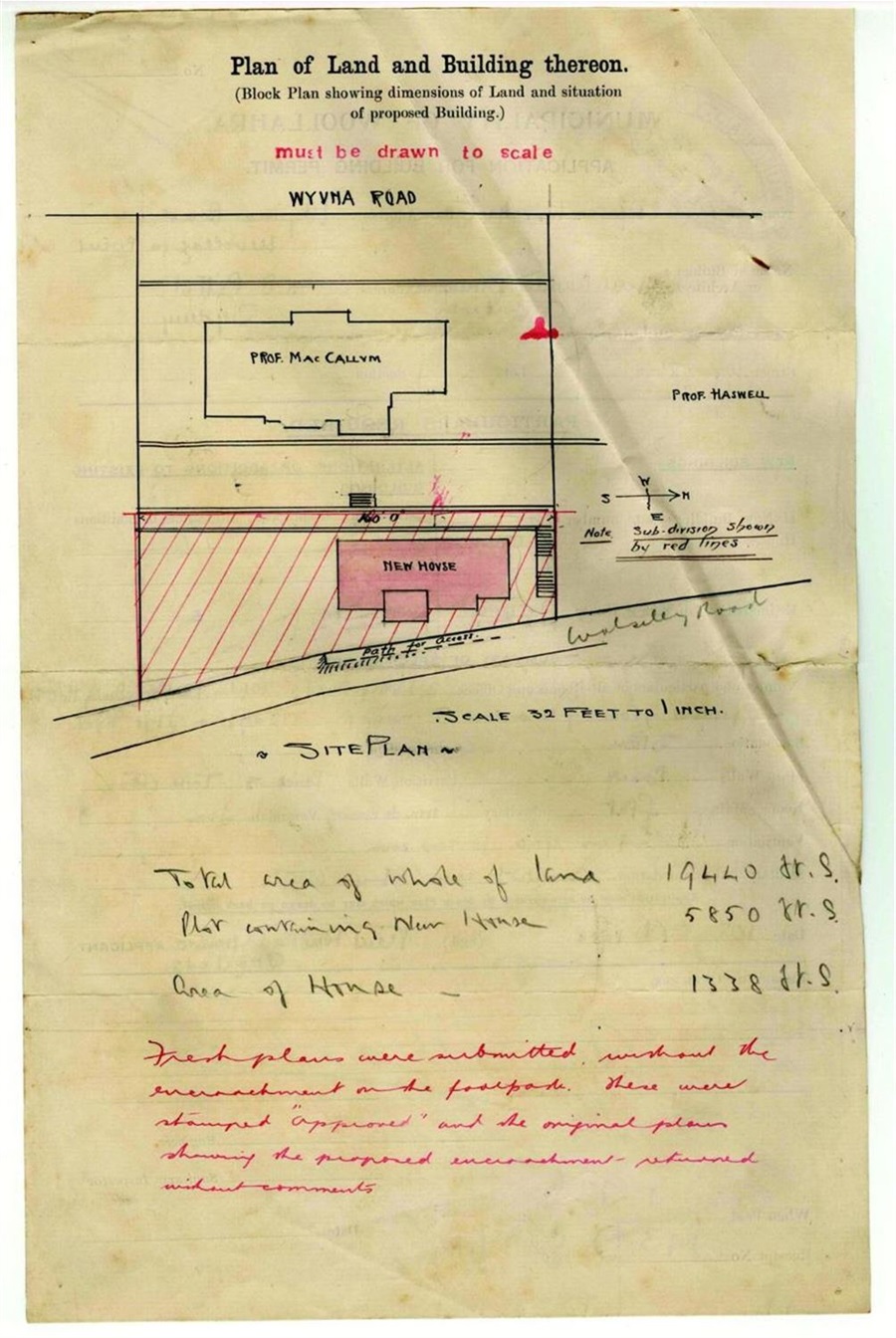
Woollahra Municipal Council Building Application BA232/1912
By December 1927, when Bryn y Mor was offered for sale, the house had been divided into two flats17 20 and was later demolished. Sir Mungo and Lady MacCallum moved for a short time to live at Manar, MacLeay Street, before taking up residence, in 1930, in a newly built apartment at 225 New South Head Road, Edgecliff. Sir Mungo and Lady MacCallum’ s daughter Isabella, with her husband Dr Lightoller, had the other apartment in the building.21 The property was sold after Lady MacCallum’s death in 1952.22 It too has since been demolished.
Sir Mungo MacCallum died on 3 September 1942 at his home in Edgecliff, Sydney and was cremated with Anglican rites - a memorial tablet to him was placed in St. Andrew's Cathedral.
Mr McCloskey, chairman of the Executive Committee of the Australian English Association paid tribute to Sir Mungo MacCallum referring to ‘the outpourings of that splendidly logical and penetrating mind, whose generous sympathies fired in listeners something of the same love and enthusiasm for all that is good and valuable in art and letters’. 23
Mungo MacCallum served the University of Sydney for so long that he appeared, in his later years, to be an institution in himself. The small, spare figure was a familiar sight to generations of undergraduates. Although he was not a forceful orator, his unfailing choice of the right word and the telling phrase made him a most effective speaker, and his lectures were illuminated by his 'cheerfulness of spirit and quick sense of humour'. Immensely energetic, he could debate with passion and criticize with vigour but his natural sense of fairness and moderation usually triumphed.
Cable, K. J. 'MacCallum, Sir Mungo William (1854–1942)24
The MacCallum Building at the University of Sydney was named in his honour and his portrait by Longstaff hangs in the Great Hall of the University of Sydney.
A memorial service was held at St Andrews Cathedral on Sept 4, 1942, attended by Representatives of the University, the legal profession, arts, literature, commerce and industry. Archbishop Mowll, conducting the service said:
Sir Mungo MacCallum's name is reverenced by successive generations of students of the University of Sydney whose minds were enlarged over a period of no less than 50 years by his stimulating lectures. He became to his pupils a perfect exponent of the art of living. His name can never die in the University. What he contributed to it by precept and example, in wide learning and accurate scholarship, is a part of its moral and intellectual wealth, of which it must always remain proud.The Sydney Morning Herald,September 5 194225
Sources
Australian Dictionary of Biography4
Griffiths, G. Nesta. Point Piper, Past and Present, Sydney : Ure Smith, 1970
NSW Land Registry Services Historic Land Records Viewer https://hlrv.nswlrs.com.au/
Sands Sydney Directories
TROVE (Newspaper articles)
University of Sydney Archives (online)26
Woollahra Council Records – including Building Registers; Rate, Assessment and Valuation books.
Notes
6 ‘Men Of Sydney’ The Sun April 13, 1937
14 Cable, K. J. 'MacCallum, Sir Mungo William (1854–1942)', Australian Dictionary of Biography
19 Was 16 Following re-subdivision, the portion of land on the Wolseley Road frontage ['Lot 2']was transferred from Dorette MacCallum to her daughter-in-law Hilda in 1929. [Source: Certificate of Title Vol 4292 Fol 202].The house was namedHakgala, presumably a reference to the mountain situated in the Nuwara Eliya district in present-day Sri Lanka, where Hilda MacCallum’ s father, George MacMurray Ballardie was based for many years due to his involvement in the tea plantations of Ceylon. The property remained in the family for many years.
23 Griffiths, G. Nesta. Point Piper, Past and Present, Sydney : Ure Smith, 1970
24 Cable, K. J. 'MacCallum, Sir Mungo William (1854–1942) Australian Dictionary of Biography
New plaques are added based on nominations from the community, which are then assessed against selection criteria and researched by a Local History Librarian.
Find out more and nominate a person or event for a plaque.
HTML Preview